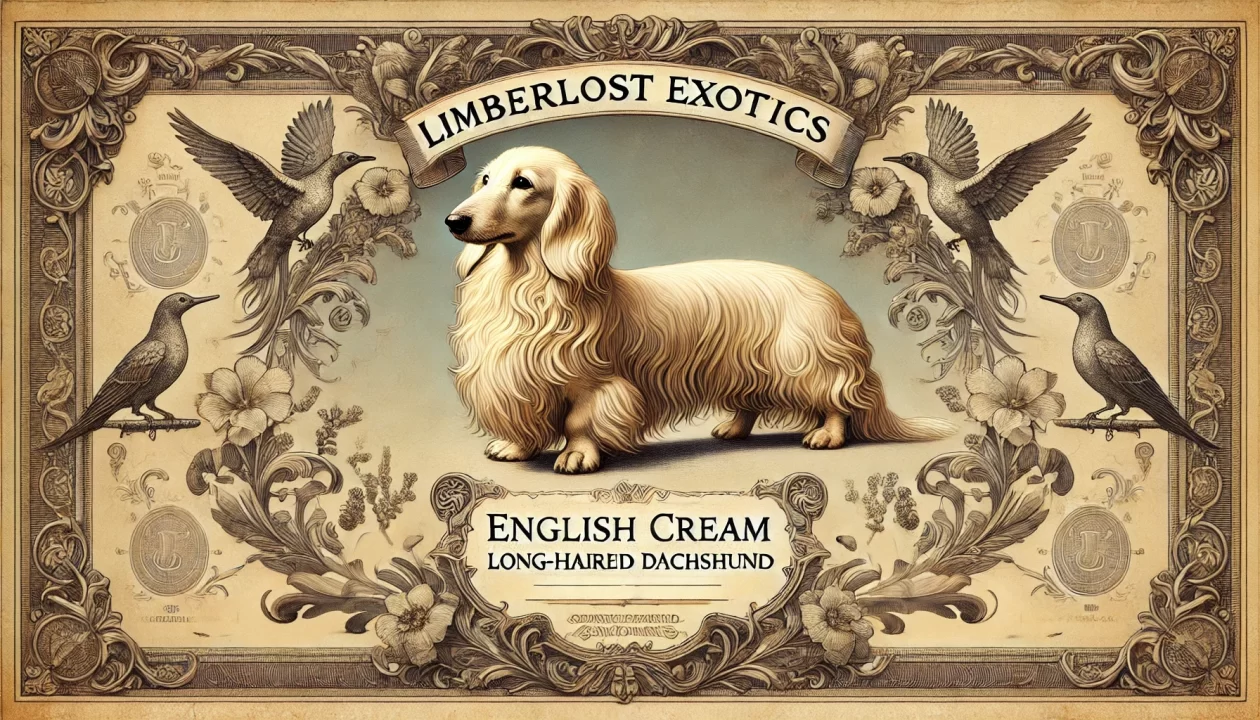The English Cream Dachshund is a beloved variety known for its soft, pale cream coat and rich black pigmentation. However, in recent years, many breeders have faced a frustrating challenge: the persistent presence of the chocolate gene in some English Cream bloodlines. Once introduced, this gene is incredibly difficult to remove, making it a major concern for breeders striving to preserve the integrity of true English Cream lines.
In this blog, we’ll explore why the chocolate gene is so stubborn, how it affects English Cream Dachshunds, and what ethical breeders can do to minimize its impact.
- The Chocolate Gene Is Recessive but Persistent
The chocolate gene (b) in Dachshunds is a recessive mutation that dilutes black pigment into brown. This affects not only coat color but also eye color, nose color, and paw pads.
Because the gene is recessive, a dog must inherit two copies (bb) to express chocolate. However, dogs that carry just one copy (Bb) will not appear chocolate but can still pass the gene to their offspring. This is where the problem begins.
Many breeders unknowingly breed Bb carriers together, and since the gene hides in the background, it may take multiple generations before chocolate-colored puppies start appearing—by then, it’s already deeply embedded in the bloodline.
- It Often Goes Undetected for Generations
One of the biggest reasons the chocolate gene is so hard to eliminate is that it doesn’t always make itself known right away. If a breeder is only focusing on visual traits, they may assume their English Creams are free of chocolate when, in reality, they are silent carriers.
It’s not uncommon for breeders to discover chocolate puppies several generations after the gene was first introduced. By then, removing it requires painstaking genetic testing and careful breeding choices—a slow and difficult process.
- The Black Pigment in English Creams Helps Mask Chocolate Carriers
True English Cream Dachshunds are expected to have rich black pigmentation on their noses, eyelids, and paw pads. However, the chocolate gene removes all black pigment, replacing it with brown.
Here’s the tricky part: Many English Creams that carry the chocolate gene still have black pigment because they have only one copy of the gene (Bb). These dogs look normal but can pass on chocolate when bred.
Unless a breeder genetically tests their dogs, they may never realize that the chocolate gene is hiding in their lines.
- Breeding Mistakes and Misinformation
Some breeders unintentionally introduce the chocolate gene into English Cream lines through poor record-keeping, mixed ancestry, or a misunderstanding of genetics. Others may deliberately cross English Creams with chocolate-based Dachshunds to create rare or marketable colors—without informing buyers of the long-term genetic consequences.
Once the chocolate gene is in a bloodline, it takes multiple generations of selective breeding to remove it, which means breeders must be extremely disciplined in their breeding programs.
- The Only Way to Truly Eliminate It: Genetic Testing & Careful Pairings
Because the chocolate gene is so persistent, the only way to ensure it is removed from English Cream lines is through DNA testing and strategic breeding choices.
• DNA Testing: Every breeding dog should be tested for the chocolate gene before being paired. If a dog carries the chocolate gene (Bb), they should only be bred to a dog that is completely clear (BB) to avoid producing more carriers.
• Long-Term Planning: Completely eliminating the chocolate gene may take several generations of careful breeding, always prioritizing dogs that are genetically clear of chocolate.
• Transparency: Responsible breeders should always disclose their dogs’ genetic status and be honest about whether a bloodline carries the chocolate gene when selling to other breeders who want to avoid these mutations.
Conclusion: The Chocolate Gene Is a Long-Term Problem
The chocolate gene is hard to remove from English Cream Dachshund lines because it is recessive, often hidden, and goes undetected for generations. Without genetic testing, breeders may unknowingly pass it down, making it deeply embedded in some bloodlines.
For breeders committed to preserving the true English Cream standard, testing, transparency, and responsible pairings are the only solutions. Eliminating the chocolate gene may take time, but it is essential for maintaining the historical integrity and health of the English Cream Dachshund.
If you are looking for a true English Cream Dachshund, always work with breeders who prioritize genetic health and ethical breeding practices—because quality and purity should always come before trendy colors or shortcuts.

